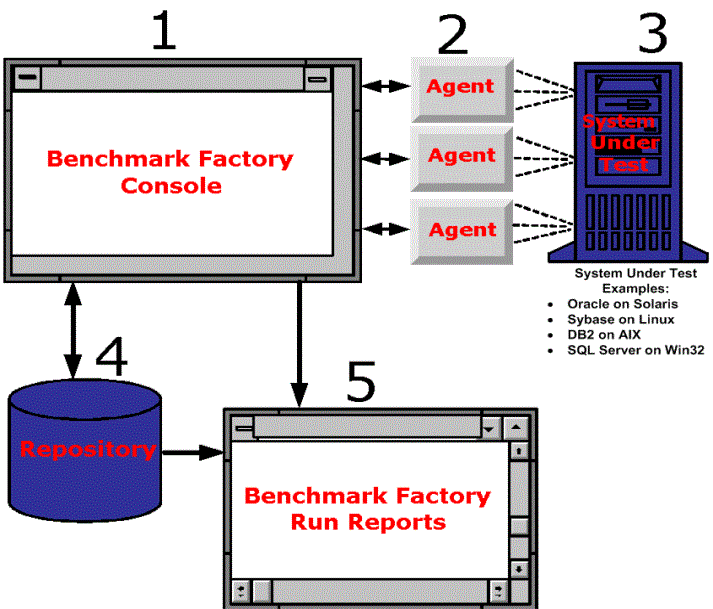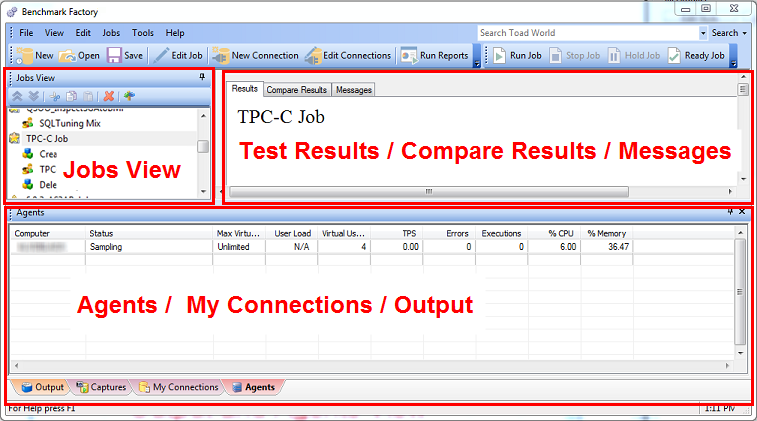How Benchmark Factory Works
The following steps provide an overview of how Benchmark Factory components interact during the load testing process.
- The Benchmark Factory Console implements the workload testing process and controls one or more distributed agent machines. Each agent machine can simulate thousands of users. Each simulated user executes transactions and records statistics.
- Benchmark Factory About Agents machines simulate virtual users. The Agents send transactions to the system-under-test. The Agents record statistics that includes how much data the resulting transaction contained and how long it took to get the results. At the end of an iteration, each agent machine reports its findings back to Benchmark Factory.
- A server (system-under-test) is the database Benchmark Factory connects to. Benchmark Factory is server neutral and network protocol independent. Benchmark Factory uses vendor client libraries of the system-under-test. Any system that the client software can support, Benchmark Factory can support. Its only requirement is that Agent machines must be able to connect to a server through an appropriate manner and it supports the test system.
- The Repository Manager stores all testing data.
- Results are viewed from Run Reports.

Feature/Edition Comparison
Review the following table for a comparison of features available in the commercial and freeware editions of Benchmark Factory.
| Feature | Freeware Edition | Commercial Edition |
|---|---|---|
| Default maximum virtual user load (without additional virtual users packs) | 20 | 100 |
| Additional virtual user packs |  |
 (unlimited) (unlimited) |
| SQL Optimizer Integration |  |
 |
| Oracle Capture and Replay |  |
 |
| SQL Server Capture and Replay |  |
 |
| Maximum number of transactions that can be run during a load test/user scenario | 20 | Unlimited |
| Scaling factors for standard benchmarks (AS3AP, TPC-B, TPC-C, TPC-D, and Scalable Hardware) | Lowest two scaling factors for each benchmark | All are available |
| Repository database types | Only the default SQLite repository is enabled | The following repository database types are supported: Oracle, Microsoft SQL Server, SAP SQL Anywhere (Adaptive Server Anywhere), MySQL, and SQLite |
| BMFServer.exe |  |
 |
| Support |
Technical support from Quest is not available for the Freeware edition. |
For the Commercial edition, support from Quest is available at: https://support.quest.com |


Get the latest product information and find helpful resources at the Benchmark Factory community at: https://www.toadworld.com/products/benchmark-factory-for-databases
Benchmark Factory Components
Benchmark Factory Console
The Benchmark Factory console implements the database workload testing process. This interface is where:
- Jobs are created and executed.
- Users can access test results. See Benchmark Factory Test Results for more information.
- Agents are managed. See About Agents for more information.
The Benchmark Factory Console contains the following views:

